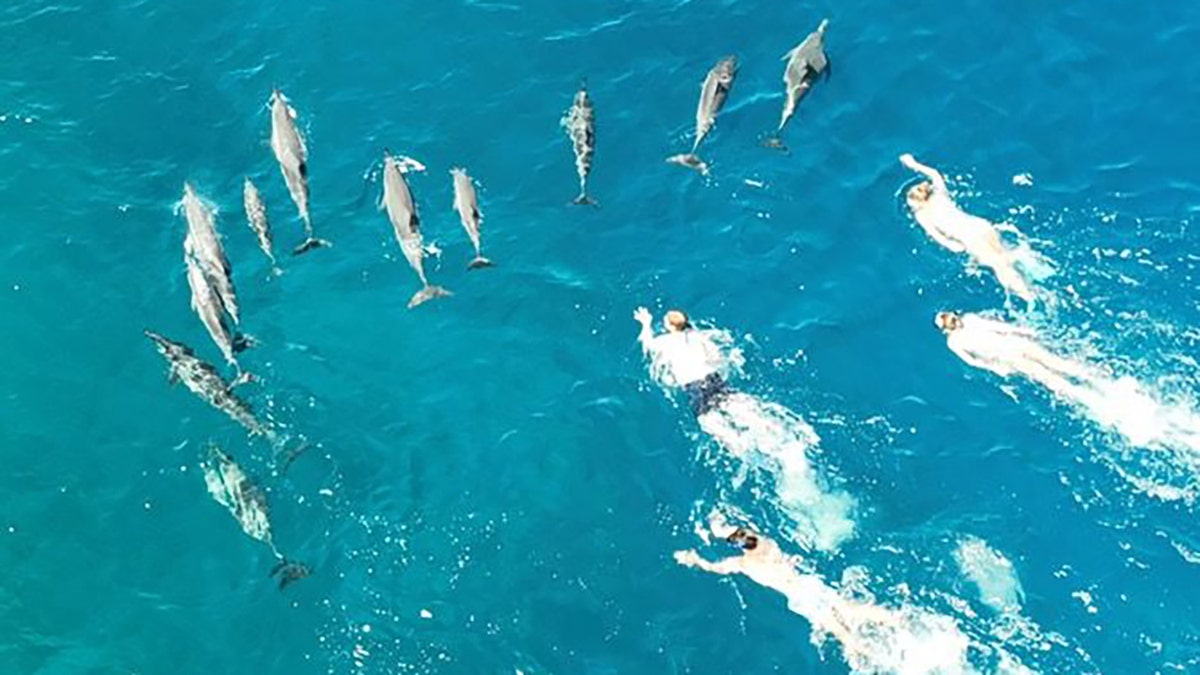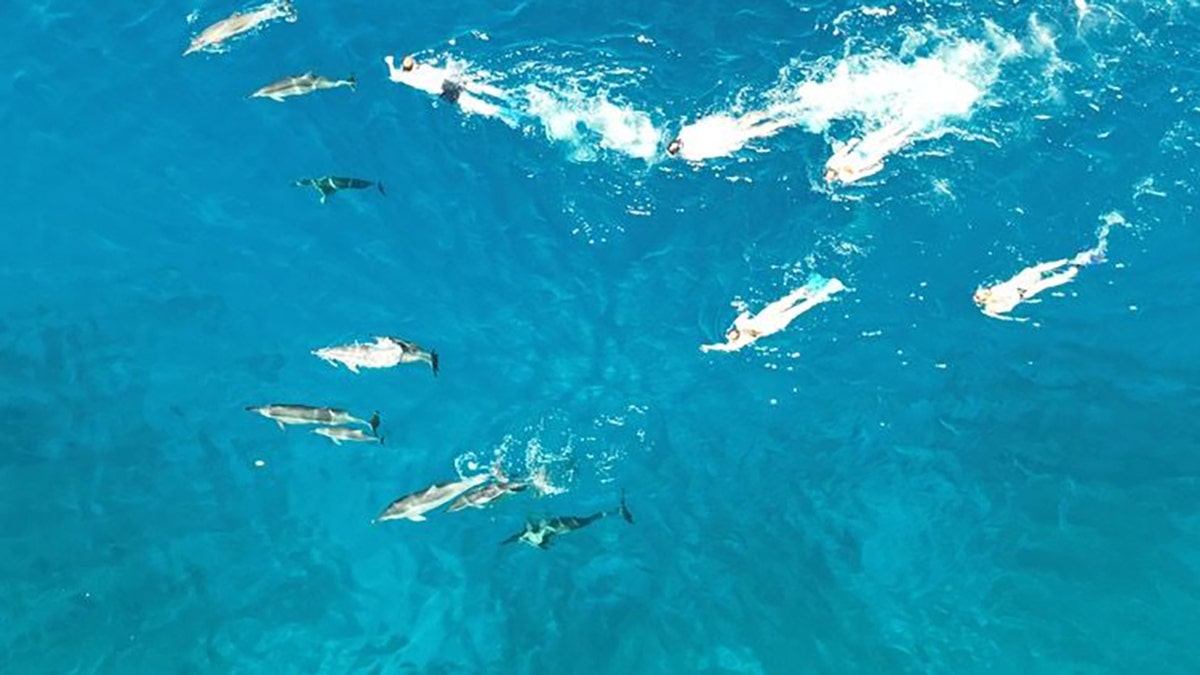33 swimmers in Hawaii harassed pod of dolphins, authorities say
Drone video captured 33 swimmers harassing a pod of dolphins just off Hawaii’s Big Island on Sunday morning, authorities said. (Credit: Hawaii Department of Land and Natural Resources)
Federal authorities are investigating after they say a large group of swimmers was caught harassing a pod of dolphins just off Hawaii’s Big Island on Sunday morning.
The state’s Department of Land and Natural Resources said that the 33 swimmers were spotted "actively pursuing" the dolphin pod in Hōnaunau Bay during a routine patrol in the South Kona District.
Aerial drone footage shows the spinner dolphins swimming away as the snorkelers follow. The swimmers appeared "to be aggressively pursuing, corralling, and harassing the pod," the agency said in a statement.
Officers contacted the group while they were still in the water and alerted them to the violation.
HAWAII MAN CITED AFTER ALLEGED HARASSMENT OF HUMPBACK WHALE, DOLPHINS

The swimmers appeared "to be aggressively pursuing, corralling, and harassing the pod," the agency said in a statement. (Hawaii Department of Land and Natural Resources)
Uniformed officers met the swimmers on land where state and federal officials launched a joint investigation.
It's against federal law to swim within 50 yards of spinner dolphins in Hawaii’s nearshore waters.

Department enforcement officers speak to swimmers in Honaunau, Hawaii, on Sunday after the swimmers allegedly harassed a pod of wild spinner dolphins. (Hawaii Department of Land and Natural Resources)
The rule went into effect in 2021 over concerns that tourists were swimming with dolphins and disrupting the nocturnal animals’ sleep.
CALIFORNIA SEA OTTERS KILLED BY RARE PARASITE THAT COULD ALSO THREATEN HUMANS
Hawaii’s spinner dolphins feast on fish and small crustaceans that surface from the ocean’s depths at night. When the sun rises, they head for shallow bays to hide from tiger sharks and other predators.

It's against federal law to swim within 50 yards of spinner dolphins in Hawaii’s nearshore waters. (Hawaii Department of Land and Natural Resources)
While the dolphins appear to be awake during the day because they’re swimming, they are resting half their brain and keeping the other half awake to surface and breathe. To those unaware, the animals may be sleeping even when they’re moving through the water.
CLICK HERE TO GET THE FOX NEWS APP
The rule applies to areas within 2 nautical miles of the Hawaiian Islands and in designated waters surrounded by the islands of Lanai, Maui and Kahoolawe.
The Associated Press contributed to this report.


